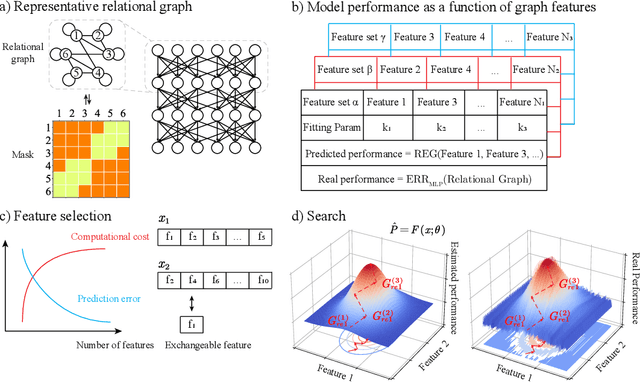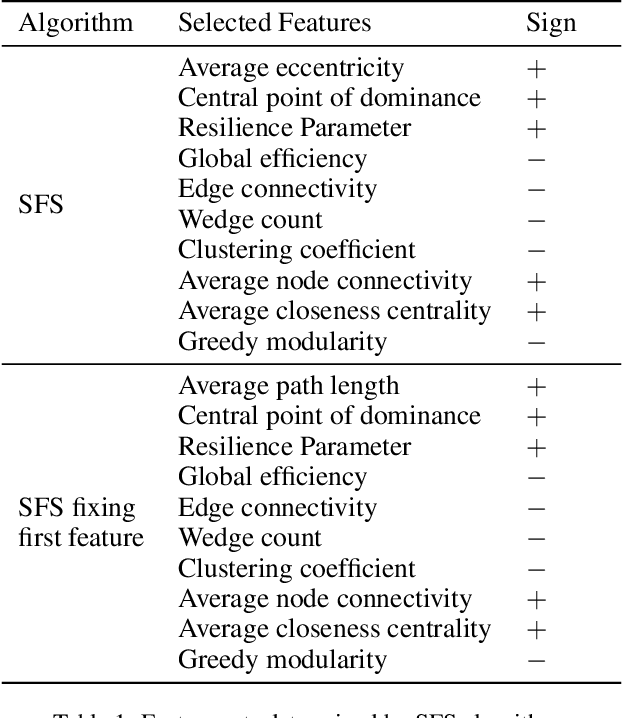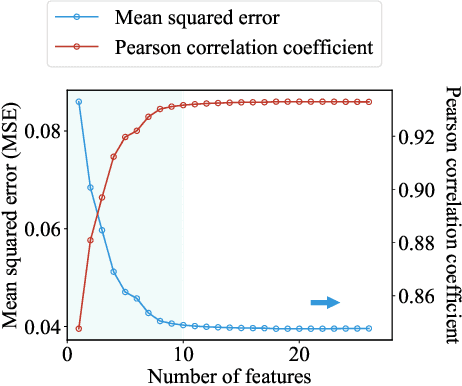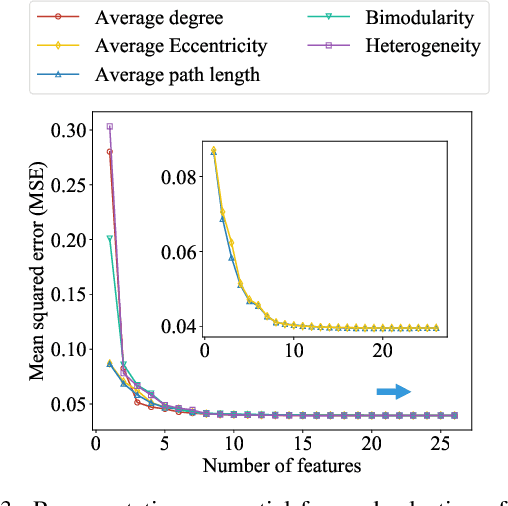Chunheng Jiang
Neural Capacitance: A New Perspective of Neural Network Selection via Edge Dynamics
Jan 14, 2022



Abstract:Efficient model selection for identifying a suitable pre-trained neural network to a downstream task is a fundamental yet challenging task in deep learning. Current practice requires expensive computational costs in model training for performance prediction. In this paper, we propose a novel framework for neural network selection by analyzing the governing dynamics over synaptic connections (edges) during training. Our framework is built on the fact that back-propagation during neural network training is equivalent to the dynamical evolution of synaptic connections. Therefore, a converged neural network is associated with an equilibrium state of a networked system composed of those edges. To this end, we construct a network mapping $\phi$, converting a neural network $G_A$ to a directed line graph $G_B$ that is defined on those edges in $G_A$. Next, we derive a neural capacitance metric $\beta_{\rm eff}$ as a predictive measure universally capturing the generalization capability of $G_A$ on the downstream task using only a handful of early training results. We carried out extensive experiments using 17 popular pre-trained ImageNet models and five benchmark datasets, including CIFAR10, CIFAR100, SVHN, Fashion MNIST and Birds, to evaluate the fine-tuning performance of our framework. Our neural capacitance metric is shown to be a powerful indicator for model selection based only on early training results and is more efficient than state-of-the-art methods.
Network Graph Based Neural Architecture Search
Dec 15, 2021



Abstract:Neural architecture search enables automation of architecture design. Despite its success, it is computationally costly and does not provide an insight on how to design a desirable architecture. Here we propose a new way of searching neural network where we search neural architecture by rewiring the corresponding graph and predict the architecture performance by graph properties. Because we do not perform machine learning over the entire graph space and use predicted architecture performance to search architecture, the searching process is remarkably efficient. We find graph based search can give a reasonably good prediction of desirable architecture. In addition, we find graph properties that are effective to predict architecture performance. Our work proposes a new way of searching neural architecture and provides insights on neural architecture design.
Environment Transfer for Distributed Systems
Jan 06, 2021



Abstract:Collecting sufficient amount of data that can represent various acoustic environmental attributes is a critical problem for distributed acoustic machine learning. Several audio data augmentation techniques have been introduced to address this problem but they tend to remain in simple manipulation of existing data and are insufficient to cover the variability of the environments. We propose a method to extend a technique that has been used for transferring acoustic style textures between audio data. The method transfers audio signatures between environments for distributed acoustic data augmentation. This paper devises metrics to evaluate the generated acoustic data, based on classification accuracy and content preservation. A series of experiments were conducted using UrbanSound8K dataset and the results show that the proposed method generates better audio data with transferred environmental features while preserving content features.
Practical Algorithms for Multi-Stage Voting Rules with Parallel Universes Tiebreaking
Jan 16, 2019



Abstract:STV and ranked pairs (RP) are two well-studied voting rules for group decision-making. They proceed in multiple rounds, and are affected by how ties are broken in each round. However, the literature is surprisingly vague about how ties should be broken. We propose the first algorithms for computing the set of alternatives that are winners under some tiebreaking mechanism under STV and RP, which is also known as parallel-universes tiebreaking (PUT). Unfortunately, PUT-winners are NP-complete to compute under STV and RP, and standard search algorithms from AI do not apply. We propose multiple DFS-based algorithms along with pruning strategies, heuristics, sampling and machine learning to prioritize search direction to significantly improve the performance. We also propose novel ILP formulations for PUT-winners under STV and RP, respectively. Experiments on synthetic and real-world data show that our algorithms are overall faster than ILP.
Practical Algorithms for STV and Ranked Pairs with Parallel Universes Tiebreaking
May 17, 2018



Abstract:STV and ranked pairs (RP) are two well-studied voting rules for group decision-making. They proceed in multiple rounds, and are affected by how ties are broken in each round. However, the literature is surprisingly vague about how ties should be broken. We propose the first algorithms for computing the set of alternatives that are winners under some tiebreaking mechanism under STV and RP, which is also known as parallel-universes tiebreaking (PUT). Unfortunately, PUT-winners are NP-complete to compute under STV and RP, and standard search algorithms from AI do not apply. We propose multiple DFS-based algorithms along with pruning strategies and heuristics to prioritize search direction to significantly improve the performance using machine learning. We also propose novel ILP formulations for PUT-winners under STV and RP, respectively. Experiments on synthetic and real-world data show that our algorithms are overall significantly faster than ILP, while there are a few cases where ILP is significantly faster for RP.
 Add to Chrome
Add to Chrome Add to Firefox
Add to Firefox Add to Edge
Add to Edge